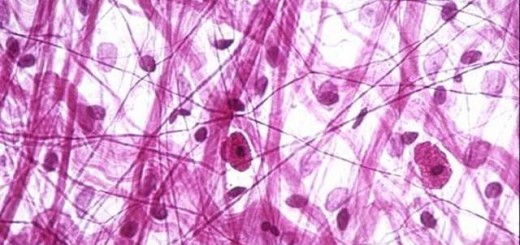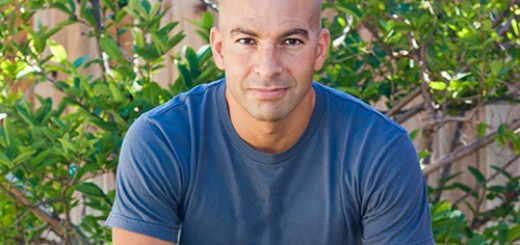CrossFit & The Missing Link: Treatment
This is the swan song of Prehab Before Rehab. I don’t care how great your Fran time is; how amazing your kipping pull-ups are or how much you can deadlift: you are walking-wounded. The more you exercise, the more you require rehabilitation. Plain and simple.
THE MISSING LINK OF THE CROSSFIT ATHLETE: TREATMENT
At first, I thought “What the heck is this CrossFit thing? And why are all these Crossfitters hurt?” As my relationship with CrossFit developed, I began to understand what was happening.
 Like many athletes, CrossFitters have developed outstanding training programs for themselves. They are willing to train weaknesses and devote time to skill work. They are exceptional workhorses, taking on large training volumes. In addition, the most incredible aspect of a typical CrossFitters’ routine is their relentless attention to nutrition. In a world that does not encourage eating clean, I must tip my cap to these diligent folks. In my opinion, however, these remarkable routines are missing an integral part. The part I’m talking about, of course, is treatment or care of a CrossFitter’s body.
Like many athletes, CrossFitters have developed outstanding training programs for themselves. They are willing to train weaknesses and devote time to skill work. They are exceptional workhorses, taking on large training volumes. In addition, the most incredible aspect of a typical CrossFitters’ routine is their relentless attention to nutrition. In a world that does not encourage eating clean, I must tip my cap to these diligent folks. In my opinion, however, these remarkable routines are missing an integral part. The part I’m talking about, of course, is treatment or care of a CrossFitter’s body.
In general, the CrossFit population seems to be willing to eat like a saint, train like an animal, and make lots of sacrifices in the name of performance. When it comes to treatment and maintenance, however, it seems to take the extremes of a catastrophic injury to get these folks to see a chiropractor, physical therapist, etc.
CrossFit is the sport of fitness. It is built and programmed around variance, functional movements, and intensity. CrossFit trains the body to function optimally as a unit and efficiency is king. This means the nervous system must be performing flawlessly so the muscles respond properly. Your body is a complex integrated system of beauty that instinctively repairs or adapts itself. When one area of your body becomes injured or shuts down, everything in your body compensates for that injury. Not to mention, these breakdowns make the body less efficient.
Our brain is the master control unit for our whole bodies. The brain sends out signals to the rest of our body via the central and peripheral nervous system. Our vertebrae protect our spinal cord and the nerves exiting the spinal cord. With everyday life, training, trauma, and other activities, our vertebrae can become subluxated and/or restricted. This in turn puts stress on the immediate surrounding nerves and indirectly affects the innervation of muscles and organs down a particular nerve pattern. This added pressure could cost your body efficiency and reaction time. Fractions of a second are huge in an athlete’s world and could mean the difference between a gold or silver medal, a sub three minute Fran, or a blocked shot in the NBA finals.
 My point is this: great athletes take care of their bodies. If you want longevity in your sport and to perform at your optimal level, you have got to take care of your body. This means you need chiropractic care, soft tissue care, and sleep on top of training and nutrition. Jerry Rice, for example, credits chiropractic care for keeping him in the game with the 49ers from 1985-2000.Derrick Rose of the Chicago Bulls recently credited chiropractic to getting him back on the court due to a back injury. Tiger Woods, Aaron Rogers, Lance Armstrong, and Michael Jordan all utilize chiropractic care before and after a performance.
My point is this: great athletes take care of their bodies. If you want longevity in your sport and to perform at your optimal level, you have got to take care of your body. This means you need chiropractic care, soft tissue care, and sleep on top of training and nutrition. Jerry Rice, for example, credits chiropractic care for keeping him in the game with the 49ers from 1985-2000.Derrick Rose of the Chicago Bulls recently credited chiropractic to getting him back on the court due to a back injury. Tiger Woods, Aaron Rogers, Lance Armstrong, and Michael Jordan all utilize chiropractic care before and after a performance.
Athletes are the greatest compensators. For example, when an athlete’s pecs muscle becomes too tight, this will rotate the whole shoulder complex internally and shut down the activation of the scapula along the rib cage. In turn, the rotator cuff muscles, which are designed for specificity, will increase their work output along with the traps and other associated neck muscles. An athlete will keep performing until something breaks down or he/she feels pain.
Yes, exercise is taking care of your body, but you also need to address the muscles, nerves, and joints that are used during movements. You need to take care of the machine that keeps you moving. When your body is not balanced and/or muscles are not firing correctly, this predisposes you to not only a poor performance but injury as well.
Think about your car. You get the oil changed and tires rotated regularly. Why would you not take similar care of your body also? Chiropractic care ensures that your body is balanced, vertebrae are aligned, and muscles are firing correctly, so that you can function optimally on and off the field.
For my athletes that are injury free, I recommend chiropractic once a week, a massage every two weeks, staying on top of their hydration, and sleep often for recovery.Massage helps to normalize the intramuscular gradient by decreasing inflammation and swelling. Muscle work can also help to maintain range of motion. Hydration is key both before and after a workout. Sleep is the optimal environment for growth hormones to do their jobs.
Complete the circle: train hard, eat clean, and get treatment on your body. Keep yourself in the game as long as possible. Visit mobilitywod daily, get adequate amounts of sleep, and by all means, get yourself to a chiropractor.
Original Article by: Lindsey Mathews at breakingmuscle.com





